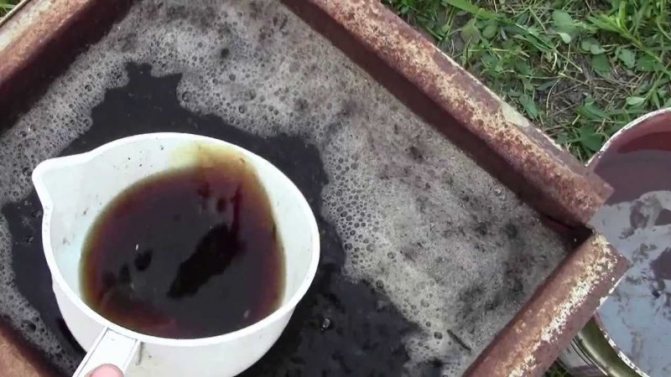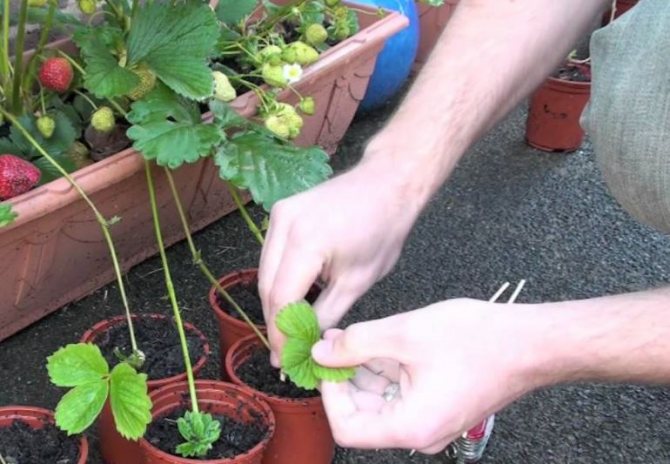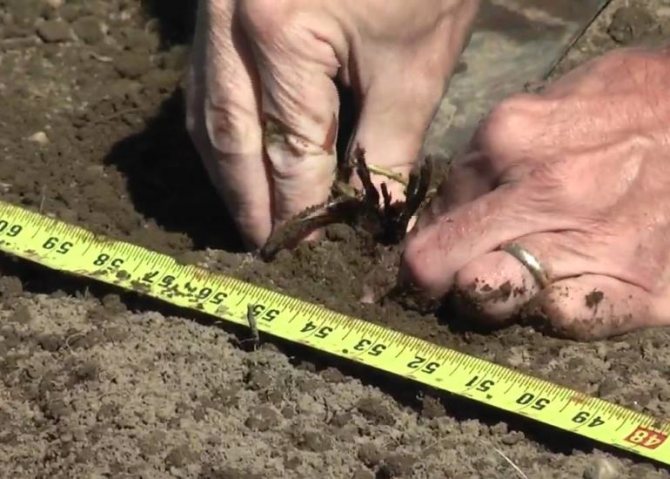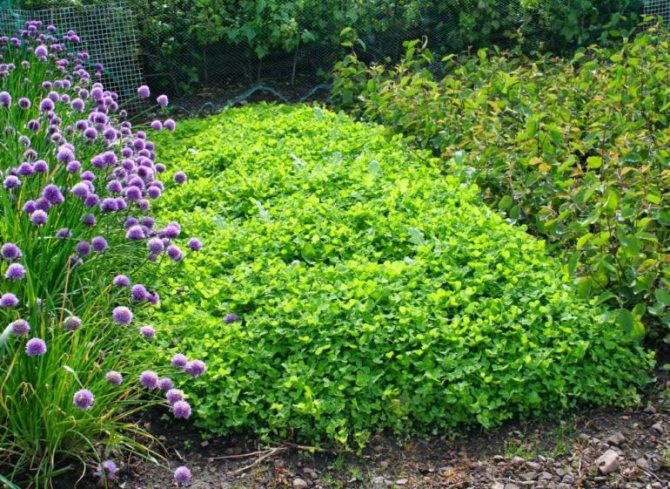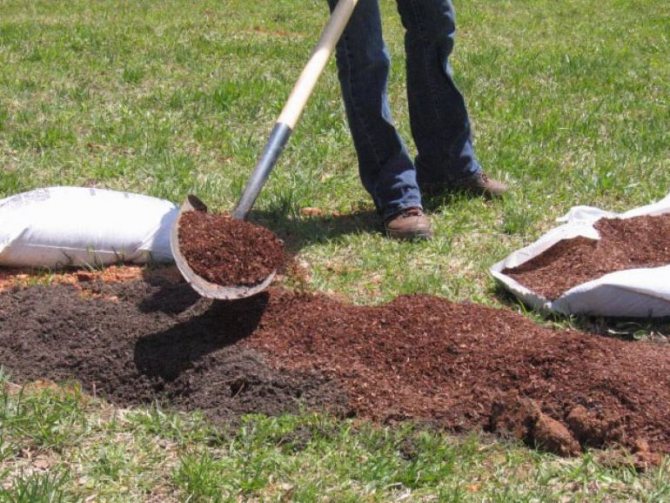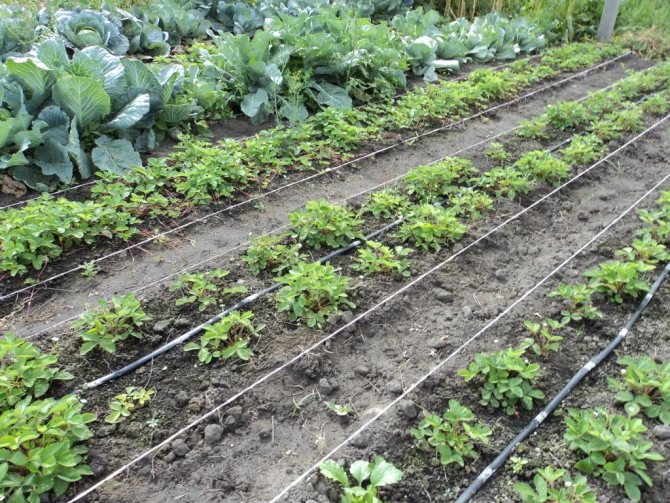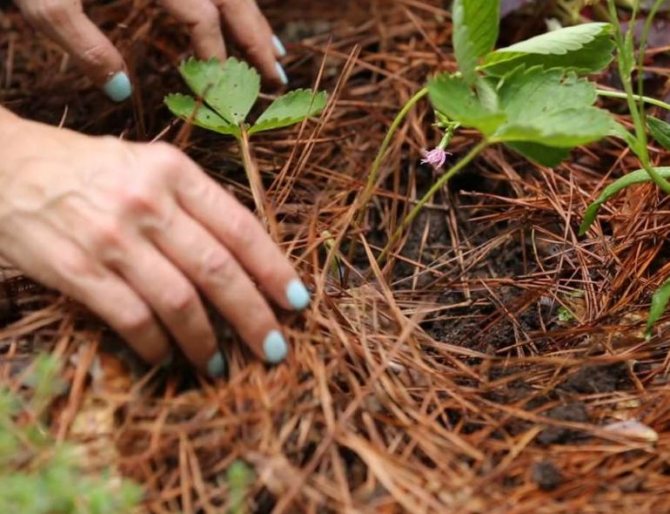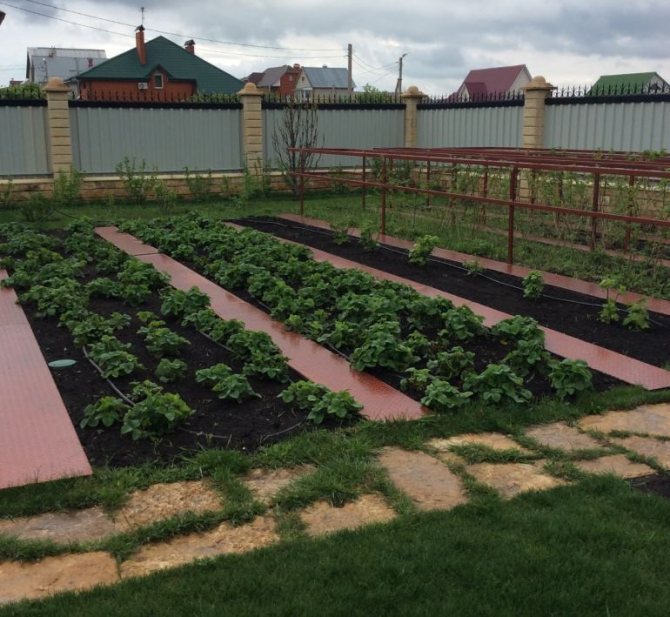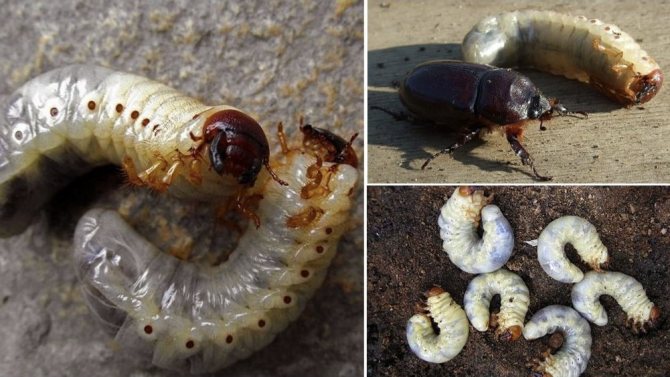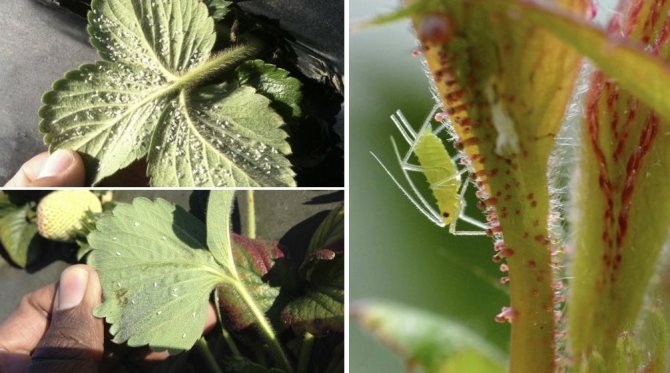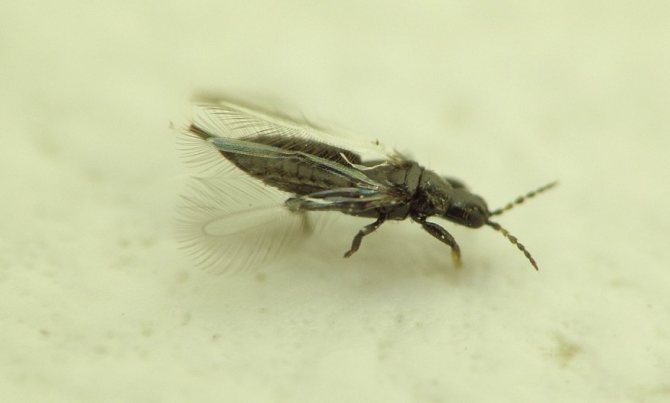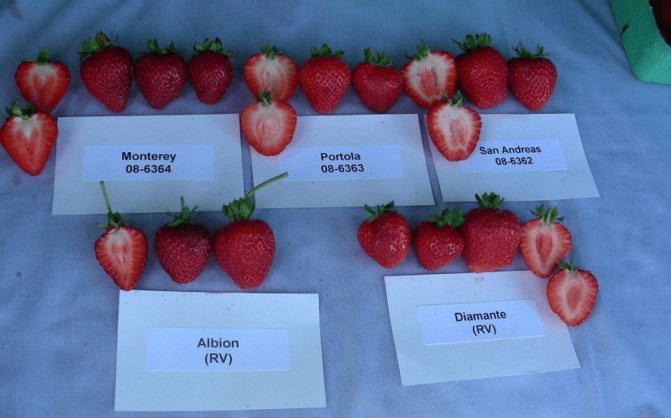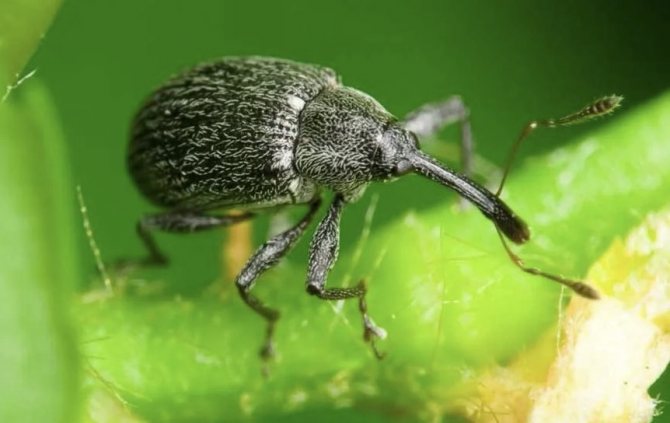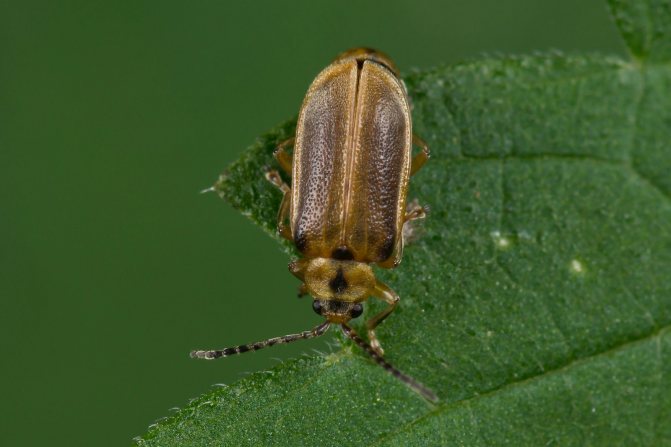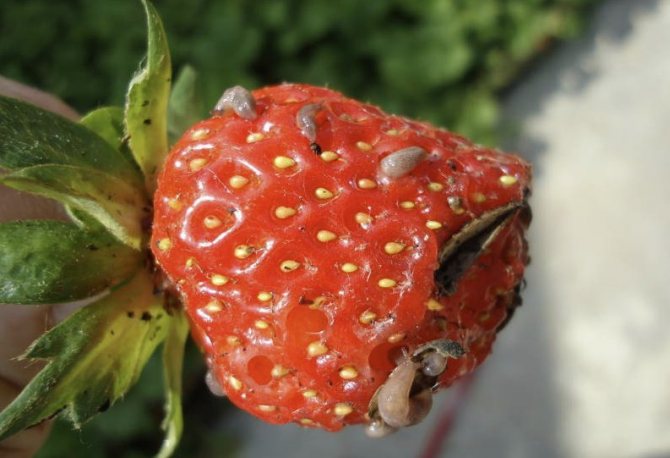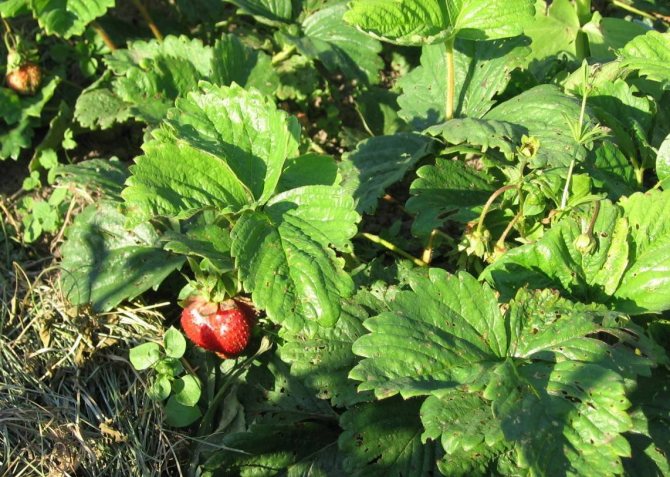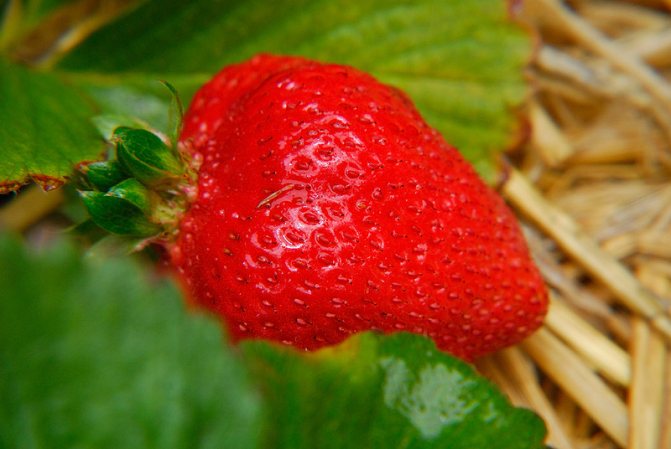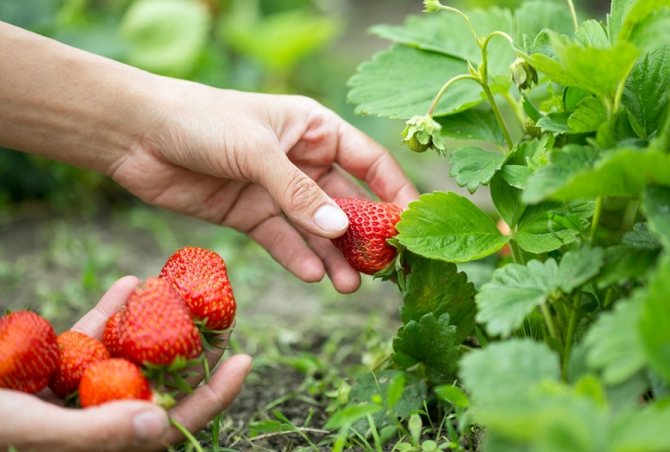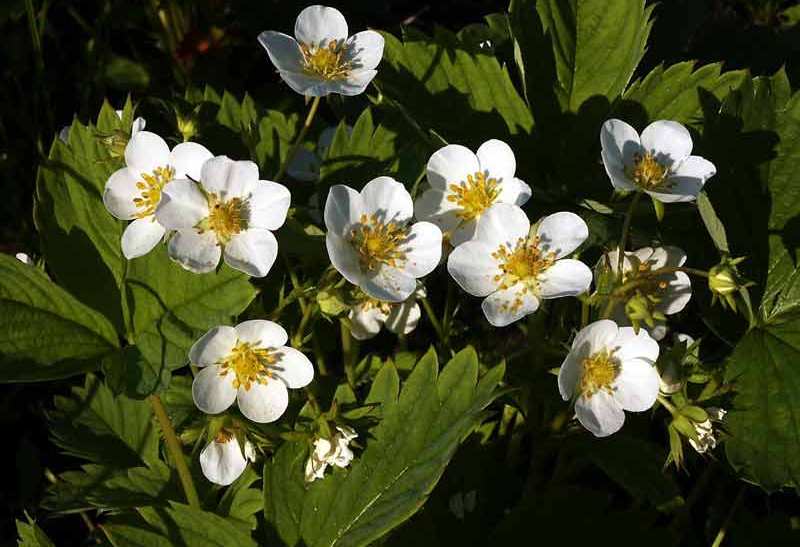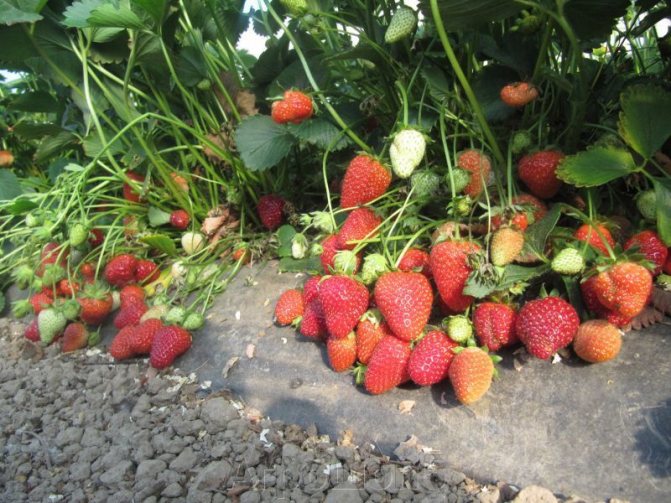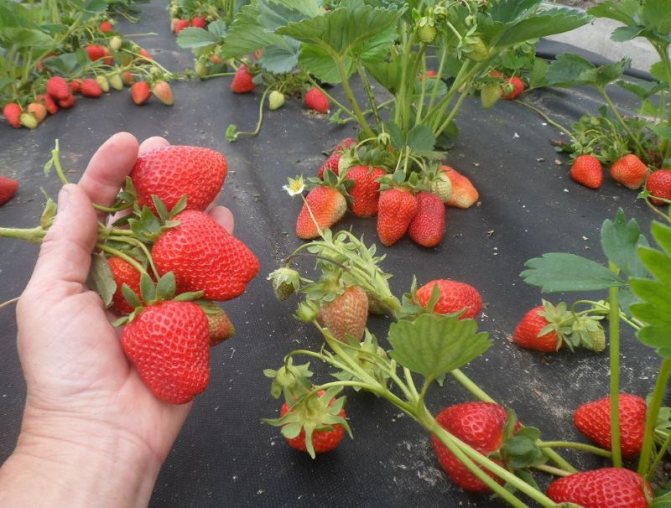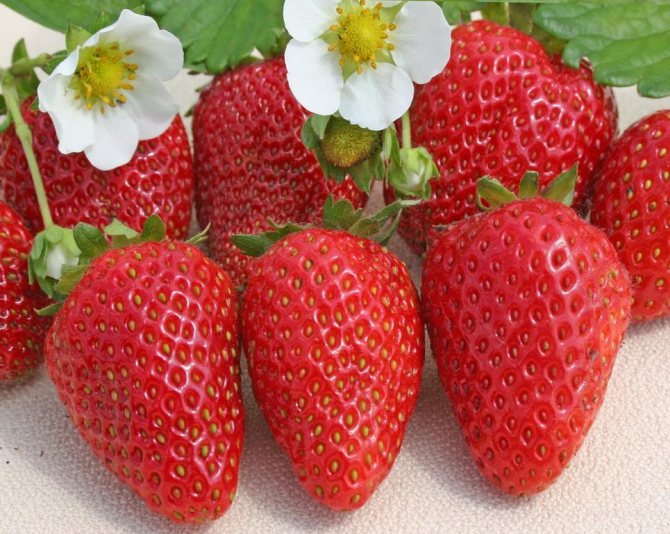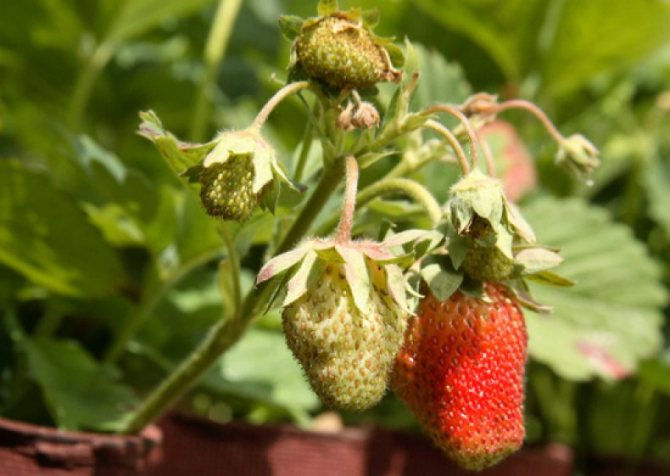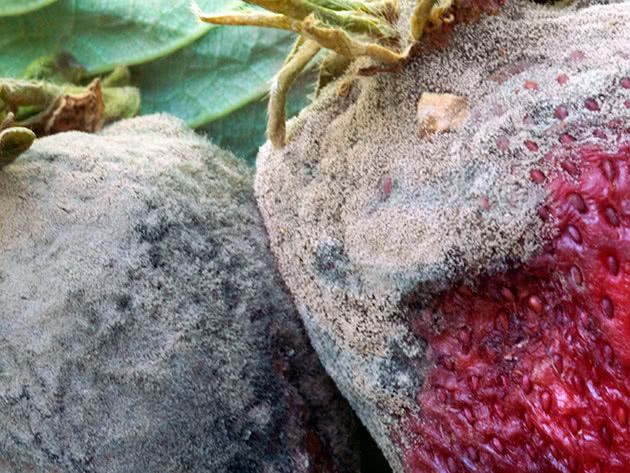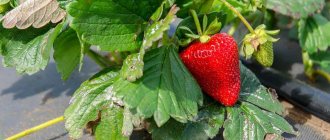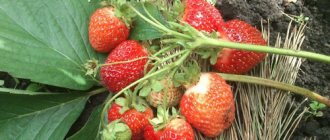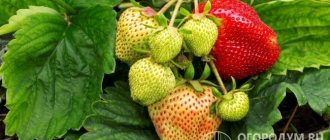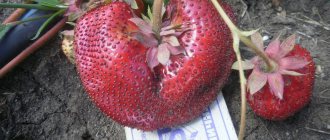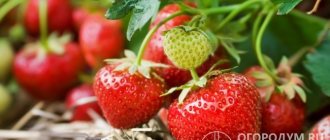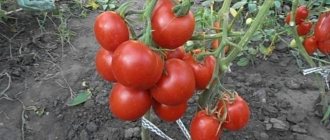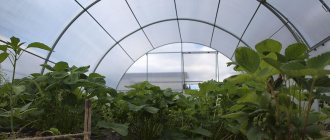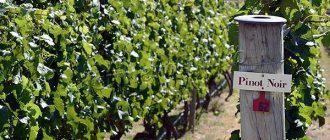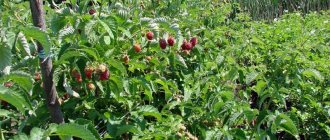I bought the San Andreas strawberry seedlings on the market and the next year I was just delighted with it: the harvest was gorgeous. The berries have grown large, with orange-red flesh, very juicy and sweet. And in terms of volume, the harvest broke the records of all varieties that I have grown before. Now I grow only it.
Next, I want to talk about some of the features of planting, watering and caring for San Andreas strawberries, as well as its pros and cons.
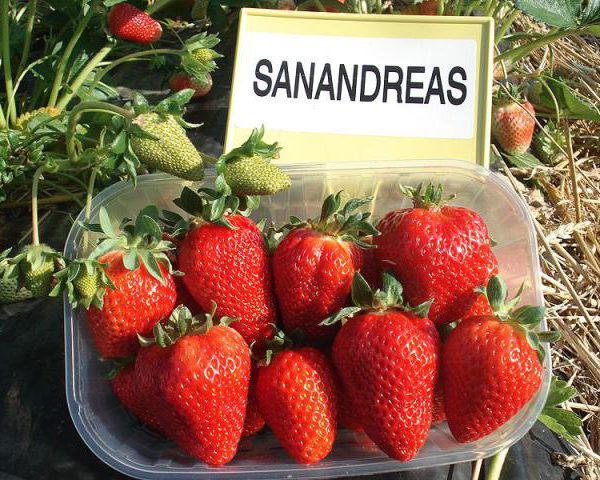
Appearance
The San Andreas strawberry belongs to the remontant varieties, it has a dense surface with slightly depressed seeds, the berries are slightly elongated in shape, conical with a rounded tip. The tail is tightly attached to the berry. The fruits, although with a noticeable sourness, are generally sweet and very juicy.
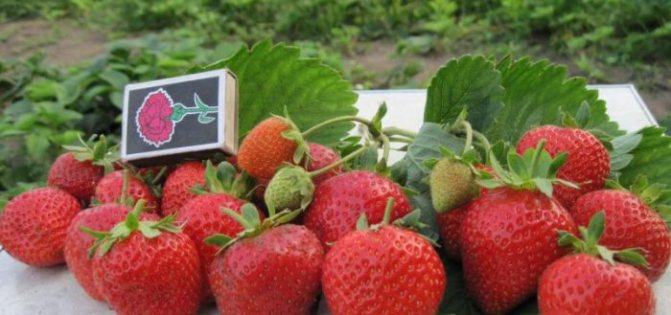

Medium-sized bushes with impressive roots and bright green leaves.
Strawberry propagation
If the goal is to get the maximum number of seedlings, then annual planting renewal is mandatory. On mother plants, all flowers and ovaries are regularly removed so that the plant gives off strength for growth and vegetative propagation. We recommend weekly spraying and root watering with fertilizers with a high nitrogen content. For example, Plantafol (Planter) with the formula 10/30/10.
Repaired varieties and, in particular, San Andreas are recommended to be renewed annually so that the plant has a lot of whiskers.
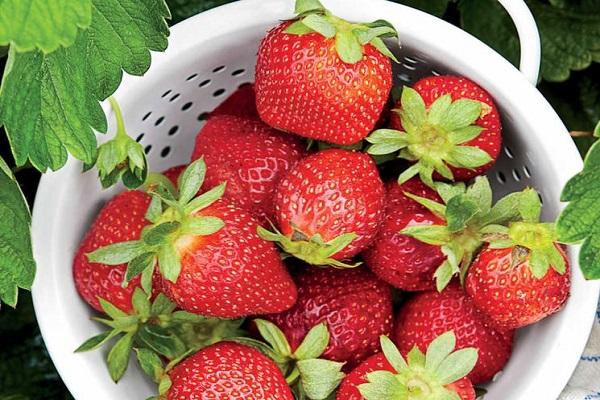

Landing
In general, the process of planting and caring for San Andreas strawberries is not too difficult, but nevertheless, some features are worth knowing, especially for novice gardeners. First of all, it is worth remembering that in too dense soil, loam or scarce sandstone, you will not see the desired harvest. Strawberries prefer black soil or sandy loam soil fertilized with peat.
The best time for planting is the middle of spring, however, it is advisable to cut off all flowers that have appeared this season in order to allow the plant to grow stronger and take root. But if you want the seedlings to take root better and the future harvest to be plentiful, then planting can be done in the fall, in which case they should not be allowed to bear fruit in warm autumn.
General rules for planting seedlings:
- holes are made in the garden about 10 cm deep
- humus is introduced into the holes and watered with a weak solution of potassium permanganate
- the seedlings are moistened before planting, if they germinated in peat soil in pots, then peat should not be removed
- the roots are straightened in the hole and carefully covered with earth, while the apical bud remains on the surface
The distance between the bushes is recommended about 30-40 cm, and between the rows of plants - 40-45 cm.
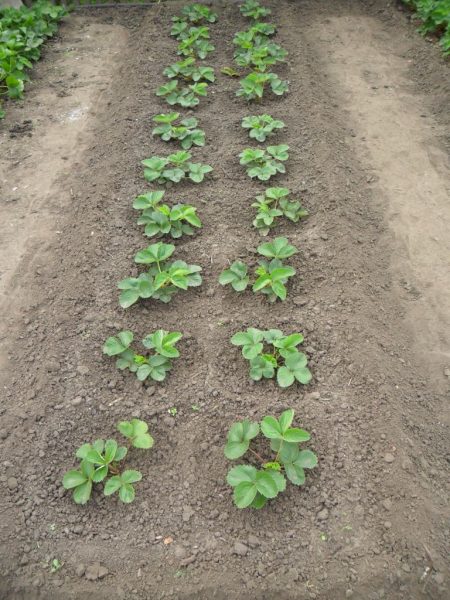

For planting, it is advisable to choose elevated areas with good lighting. It is also good to take care that the plants are not too blown by the wind. To do this, you can plant currants or gooseberries around the perimeter of the berry. Do not forget about groundwater - there should be at least 1.5 m to them.
Planted plants should be well watered and preferably mulched. For this purpose, straw or film is usually used. It should be remembered that the film is able to soar the soil and plant roots, therefore, in areas with hot climates, it is better to opt for straw or sawdust.
Watering
Like all strawberries, San Andreas gratefully responds to watering, otherwise, if the soil dries out too much, the berries themselves and the volume of the crop as a whole will significantly decrease. But watering must be done very carefully, because in case of stagnant water, the roots of strawberries may suffer. The best solution to this problem is drip irrigation, it is with it that ideal conditions for the growth and excellent fruiting of strawberries can be achieved.
Fertilizer
As mentioned above, "San Andreas" prefers rich soils, so it is important to feed the plants with organic and mineral fertilizers during the season:
- Nitrogen. At the end of spring, when the plants are actively growing and inflorescences begin to appear, it is best to add nitrogen (this can be manure diluted in water or chicken droppings or nitrogen fertilizers).
- Nitrogen, Phosphorus and Potassium. It is advisable to apply a fertilizing containing these microelements during the flowering of the plant.
- Phosphorus and Potassium. At the end of summer, when the processes of preparation for winter take place in the plants and the buds of the future harvest are laid, it will not be superfluous to feed them with superphosphates and potassium chloride.
- Along with the listed fertilizers, one should not forget about organic additives. Rotted manure or humus will perfectly cope with this task. It is better to introduce them either in early spring or in autumn.
Preparing for winter
It is recommended to prune plants in the fall. Leaves and remaining peduncles are removed, but it is important not to hurt the apical bud. It is better to insulate bushes for the winter with spruce branches.
Features of growing and care
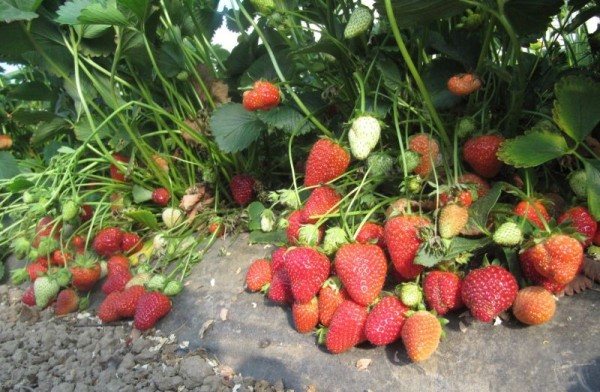

The best soil for growing the variety is black soil. Peat is additionally introduced into the soil before planting. If the soil is dense or sandy, regular fertilizing is necessary for a stable yield.
You can plant seedlings in early April. When planting strawberries in September, the next year's harvest will be rich. When flowers appear in the autumn, they must be removed, otherwise the yield next year will be worse.
A gap of 30 centimeters is maintained between the plants. Between the rows - 40 centimeters. This distance allows the root system and the ground part of the strawberry to develop.
When planting seedlings, the core of the strawberry should be flush with the ground. Deepening the rosette can lead to the death of the plant.
To retain moisture, mulch is spread between the plants, it can be straw, sawdust or chopped dry grass.
After a month, the plants need to be fed. Top dressing should be regular and repeated every 10 days. Watering, depending on the weather, is carried out at least once a week.
San Andreas has poor protection against strawberry bugs and plant aphids, and requires special treatment to protect against pests.
For the winter, the plants need to be covered with mulch. For mulch, corn foliage, raspberry branches are suitable. Without shelter, the bushes can withstand temperatures as low as -16 degrees.
San Andreas grows in one place for 3 years, then the bushes require replanting to a new place. Without replanting, the yield decreases, since the soil does not receive the required amount of nutrients. In addition, plants become more vulnerable and more likely to be affected by pests.
Diseases and parasites
Although the variety is distinguished by increased immunity from many diseases, it is still not completely insured against possible ailments. Most often it is powdery mildew or white spot, and from pests - aphids and strawberry mites. Therefore, immediately upon detection of a problem, it should be dealt with with the help of special drugs. And as preventive measures, experienced gardeners advise:
- damaged, dried out plants or their parts must be promptly removed
- in early spring, the site should be freed from old foliage, since it most often contains pathogens of fungal diseases
Fruit harvesting and storage rules
In the summer months, strawberry harvesting is carried out in the early morning hours or in the evening, when solar activity has already subsided. The berries picked in the heat are worse in taste and quality, and spoil faster. In case of early spring or autumn sampling, on the contrary, it is advisable to pick the berries when the sun's rays heat them, drying the morning dew from the fruits.
The berries are collected in plastic booties (1 and 0.5 kilograms) or small, cardboard flat boxes with a capacity of up to 5 kilograms. In this case, transportability and keeping quality will be maximum. After harvesting, it is advisable to cool the fruits, if possible. This procedure further enhances the commercial characteristics of the strawberries during subsequent transportation.
Reviews of the strawberry "San Andreas"
Olga
The “San Andreas” variety was given to me by a friend three years ago. I planted the plants on fertilized soil and in the same season began to make top dressing. But in the end, the formation of antennae only increased. Now I am very careful with fertilizers and the generous harvests are always pleasing. "
Nikolay
My whole family loves San Andreas. They are very good not only in appearance, but also in taste. In the first season, the harvest was small, but in subsequent years it was just excellent: from each bush per season, a colleague of 2-2.5 kg of berries. In the spring I plan to plant some bushes, as the berries have become a little smaller. "
Veronica
I have been growing San Andreas strawberries for the fifth season. I bought seedlings by accident. After the appearance of the first harvest, unknowingly, I almost abandoned the variety: I picked the berries as soon as they turned red. Their taste was much worse than expected. But then I realized my mistake - the berries need to be allowed to fully ripen, it is in this state that they are simply delicious. In addition, they are excellently transported. So, taking into account the yield of the variety, it turns out to sell the surplus throughout the summer ”.
Reviews:
Zarina:
I saw this variety of strawberries in the store. The seller recommended it and I could not resist and bought 5 bushes. For the southern climate, San Andreas is ideal. I planted seedlings near the blackberry bushes. She took the first harvest in the same summer. The size of the berries was medium, but the taste and aroma were excellent. In the second and third years, the berries became really large, and their weight reached 50 grams. In the spring I want to plant bushes to get more bushes.
Karamel:
I love fresh strawberries and in various dishes. I always bought it on the market, but still decided to try myself in the gardening business. I planted some San Andreas bushes in my flower bed. Bushes delighted with beautiful foliage. The berries turned out to be so large that a neighbor, recognizing the variety, planted a whole clearing in her garden. My berries turned out to be much tastier than those that I bought from farmers.
Conclusions:
- Strawberry "San Andreas" is a remontant hybrid variety with dense, tasty and juicy berries.
- The variety has increased immunity against brown spot and anthracnose.
- Berries "San Andreas" lend themselves well to transportation.
- The plant prefers black soil or sandy loam soils with peat.
- To obtain a bountiful harvest, it is important to take care of the drip irrigation of the plants.
- The plant does not lend itself well to reproduction - antennae are formed in small quantities, and when propagated by seeds, the properties of the variety will be lost.
Description of the variety
Bushes
San Andreas forms neat compact bushes, reaching a height of 30 cm. The bushes are small, but powerful (much more powerful than Albion, including the power of the root system). The stems are large, the leaves are light green, serrated. The deciduous cap itself is small, but thick, about 10-12 peduncles grow (in Albion 3-4). When the berries are ripe, the flowers tend to the ground. This is a normal phenomenon, there are no varieties where the flower stalks can withstand very large fruits.If we compare with other varieties, then the flower stalks of San Andreas are powerful and some of the berries do not touch the ground, for example, the same Selva is completely on the ground.
Berries
The fruits of the San Andreas variety are large, some specimens reach a weight of 70 g. Gardeners post photos on the Internet, where they compare the fruits with a chicken egg, but such results can only be achieved with proper care.
The berry has a solid consistency, which makes it possible to speak of good transportability of the fruit. The berries are in the form of an elongated obtuse cone expanding towards the stalk. The skin is shiny, firm, bright red. Seeds are depressed. The taste is pleasant, sweet, with a spicy sourness. If we compare again with Albion, then San Andreas berries are more sour.
After complete redness, the berries must be kept on the bushes for another 2-3 days. Only such fruits of San Andreas will be sweet and aromatic.
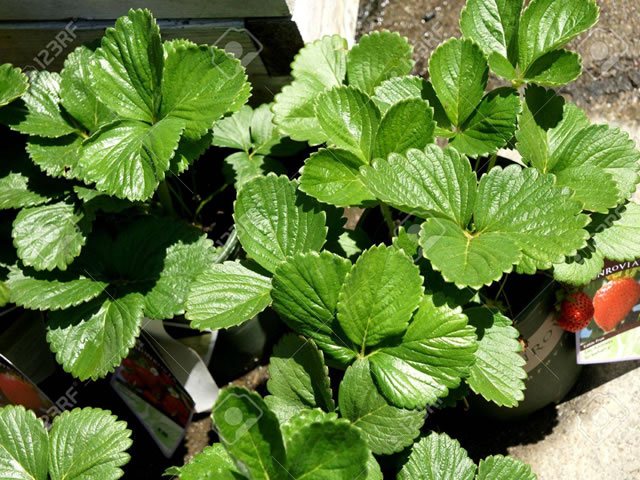

Yield
The San Andreas variety bears fruit normally with reduced daylight hours. It begins to bloom in early May, the first fruits can be enjoyed at the end of the month. The early ripening culture continues to produce harvest waves until the end of October. More than 1.0 kg can be harvested in a season. berries from each plant. In the hot period, the return is somewhat reduced, therefore, in the southern regions, it is recommended to shade the bushes with nets or awnings.
a brief description of
Advantages of the variety
San Andreas is considered an improved variety of one of its "parents" - the Albion strawberry. Breeders have tried and bred a culture with numerous advantages:
- very large berries;
- decent yield;
- good taste;
- when frozen, the berries retain their nutritional taste and integrity;
- compact bushes;
- super early maturation;
- long fruiting period;
- disease resistance;
- good resistance to decay in wet weather;
- transportability and long shelf life;
- berries are not baked in the sun;
- frost resistance (much higher than, for example, Monterey and Portola);
- average requirements for soil composition.
- resistance to mites and mites.
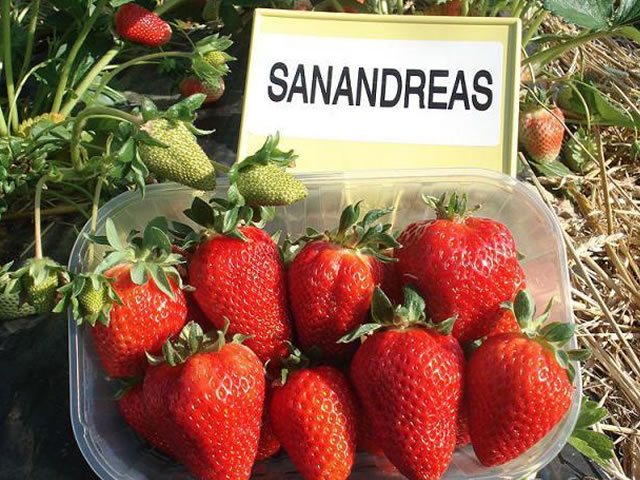

Disadvantages of the variety
The disadvantages are more related to the care of the plant and the preferences of gardeners:
- the presence of sourness in the fruits (if you are looking for berries that are sweet in any weather, pay attention to the Charlotte variety);
- sensitivity to moisture levels;
- in hot summer, you need to shade the beds;
- a small number of mustaches.
Endurance and unpretentious care clearly outweigh the presented disadvantages of the variety.
Berry characteristics
The following signs are characteristic of berries:
- The fruits are rough, the seeds are deeply planted.
- The pulp is orange inside, it has white streaks.
- Outside, the fruits are colored bright red.
- The berries are conical, their tips are slightly rounded.
- The taste is sweet, with a slight sourness.
- The average weight is 30 g, some specimens reach 60 g.
Interesting! The color directly indicates the content of vitamins and other nutrients in it. The brighter it is, the more useful they are.
How and when to plant?
Seedlings with an open root system are planted in the spring, immediately after the frost has receded, so that the plant is fully rooted before the summer heat. In autumn, planting is carried out from late August to early September. Seedlings with a closed root system (in pots) can be planted throughout the season.
Preparing the beds
Before planting strawberries, the beds are carefully weeded, mineral and organic fertilizers are applied. Plowing or digging of the soil is carried out, followed by abundant watering.
The choice of planting material
When choosing seedlings with open and closed root systems, you should pay attention to the following:
- The thickness of the heart should be from 1 centimeter or more.
- Choose seedlings with a well-developed, fibrous root system.
- The roots should be white or light brown.
- Visually, there should be no traces of disease or pests.
- When choosing seedlings in pots, powerful, stocky plants with a developed leaf apparatus are preferred. The color ranges from green to dark green.
Landing technology
Seedlings with a closed root system are planted in a pre-prepared hole flush with the ground. The tangled roots at the bottom of the pot are straightened slightly. Seedlings with an open root are placed in the hole so that the heart is at the level of the soil. Not lower and not higher. When planting, the roots are straightened, and the hole is covered with soil. After planting, the plants are watered abundantly.
Diseases and pests
| Weevil Ways to fight:
|
| Strawberry mite Ways to fight:
|
| Blue rot Ways to fight:
|
Origin and official registration
The San Andreas strawberry was developed in the early 2000s by specialists from the University of California (USA). The selection was based on varieties belonging to the line Albion and subspecies Cal 97.86-1. The resulting hybrid is considered one of the improved versions of its famous predecessor. The variety is registered as a trade mark, certified in the USA and Canada in 2009, and is actively promoted in the European berry market.
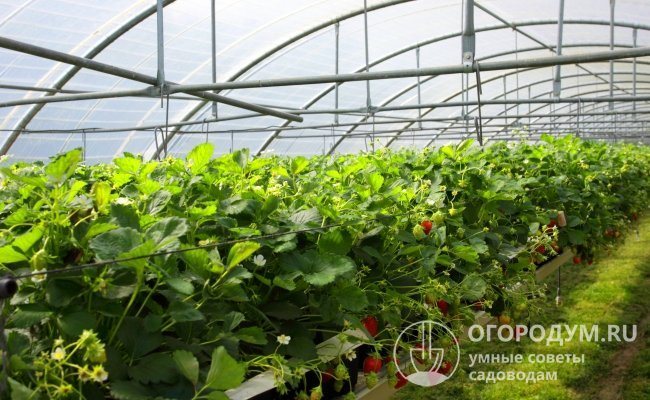

Commercial production in heated greenhouses produces crops almost all year round
The variety is officially approved for cultivation throughout Belarus (entered in the State Register in 2014). In Russia and Ukraine, it is not registered, but it is already quite widely cultivated (especially in the southern regions), showing stable productivity in open and protected ground. In the middle lane, the results are not so impressive, but gardeners note the winter hardiness of the variety (up to −16 ℃), its relative resistance to spring / autumn frosts and droughts, undemanding to soil types, high commercial and consumer qualities of fruits.
History of creation
The neutral daylight variety San Andreas was bred in 2001 by breeders Douglas W. Shaw and Kirk D. Larson. The Albion variety and the Cal 97.86-1 number selection were crossed. The resulting plants were numbered Cal 1.139-2 and planted at the University of California Wolfskill Experimental Orchard near Winters. In the same place, in 2002, the first harvest was obtained, then asexual reproduction was carried out using the rosettes formed on the whiskers, which are given by strawberries. After selection and testing, the "novelty" was assigned the number CN223, and later, when the direct sales of seedlings began, it was given the name San Andreas. This is the name of a settlement and a reservoir lake in California, as well as a 1300 km long transform fault between the Pacific and North American plates, passing along the coast through the state of California. In 2005, the cultivar was tested at the Watsonville Strawberry Research Facility, the South Coast Research and Extension Center. After the scientists were convinced that the varietal traits were fixed and preserved during subsequent reproductions, the registration procedure began and the tests of strawberries in various parameters continued.And in 2008, the first patent was obtained, valid until 2028. San Andreas is officially owned by the University of California, USA.
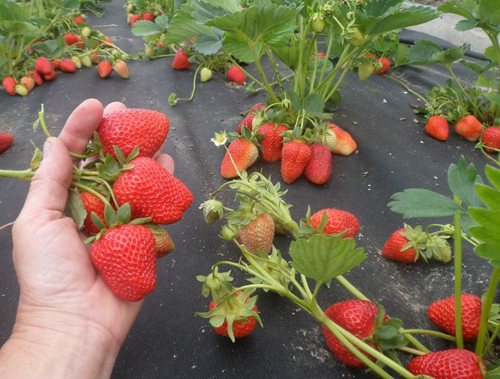

Agrotechnics of remontant strawberries
To ensure high yields for San Andreas strawberries, you need to carefully care for them.
Watering
After planting for several days, young plants need to be watered daily, and when they get stronger, 1 time in 3 days. Last year's bushes need to be watered for the first time at the end of April. In May and June, moisten the strawberries 4 times, in August and September 2 times are enough. Use only warm water, gently water the shrubs at the root, carry out the procedure in the evening.
Be sure to loosen the soil around the bush, especially after watering, to avoid crusting and oxygenate the soil.
Top dressing
Do not forget that you need to plant seedlings in a fertilized garden. If your strawberries are a year old or more, then the feeding scheme will be as follows:
- in May, fertilize strawberries with urea (10 g of fertilizer per 10 liters of water);
- in the second half of June - with a solution of chicken manure (1 part of organic matter for 20 parts of water) or manure (1 part of organic matter for 10 parts of water);
- an ash solution will also be useful (pour 2 tablespoons of ash with boiling water, leave for 3 hours, and then dilute in 10 liters of water. Each bush needs 0.5 liters) or adding dry flakes (0.5 kg per bush);
- in the fall, fertilize San Andreas with a special fertilizer (for example, Autumn).
During the season, you need to carry out 10 complex dressings, otherwise the plant will weaken by autumn and it will be difficult to endure wintering.
Mulching
This event will save you from frequent watering, since moisture will be better retained in the soil, protect the garden from weeds, prevent the washing out of nutrients from the soil and maintain its required temperature. For mulch, straw, peat, sawdust or pine needles are suitable. The mulch layer should be at least 5 cm and should be renewed from time to time.
You can also mulch the garden bed with agrofibre. If you decide to use this material, then apply all the necessary fertilizers, cover the bed with an overlapping coating, while the pieces should cover each other by 20 cm. Reinforce the agrofiber with staples. In the places where you will plant the seedlings, make cruciform incisions.
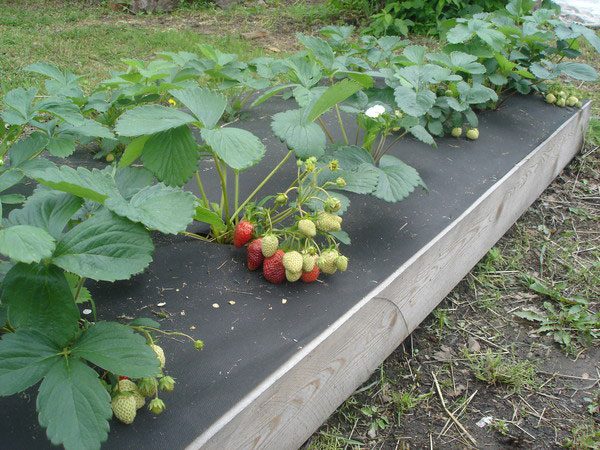

Agrofibre will protect berries from rotting
Preparing for winter
It is advisable to prune remontant strawberries in the fall. Cut off all leaves and peduncles, taking care not to damage the apical buds from which new leaves are formed. At the end of the season, cover the bushes with spruce branches, since these strawberries do not like cold weather.
San Andreas Strawberry Disease and Pest Control
San Andreas is susceptible to several diseases, including powdery mildew and white spot. Also, gardeners note that the plant is often affected by aphids and strawberry mites. Basic information on the treatment of lesions:
- With powdery mildew, the shrub becomes covered with a light bloom, which then becomes brown. Leaves curl and fall off. The yield is greatly reduced. For treatment, use a solution of colloidal sulfur (100 g of powder per 10 liters of water). Remove heavily affected shrubs.
- White spot. The main symptom is the appearance on the leaves, first of brown, and then white or gray spots in the center and surrounded by a dark border. Affected leaves dry up, the plant weakens. Bordeaux liquid is suitable for treatment. To prepare it, mix 300 g of copper sulfate with 1 liter of boiling water and 100 g of lime with 1 liter of boiling water. When the mixture has cooled, add 8 L of water and strain. Re-process if necessary. Remove heavily infested leaves.
- Aphid. Use an ash and soap solution to fight. It is prepared like this: sift 300 g of ash, pour boiling water over and boil for 25 minutes. Then dilute with 10 liters of water. To make the solution stick better, add 50 g of soap.
- Strawberry mite. This pest can also do a lot of damage to your plantings.When damaged, the leaves curl and become covered with a yellowish bloom, the berries become smaller and dry out. The affected shrub is hard to bear in the winter. To fight, use the preparations Fufanon (15 ml per 5 liters of water), Kemifos (10 ml per 5 liters).
Photo gallery: diseases and pests inflicted on strawberries
Powdery mildew can quickly destroy the bush
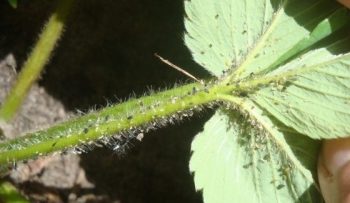

Aphids severely harm the development of strawberries
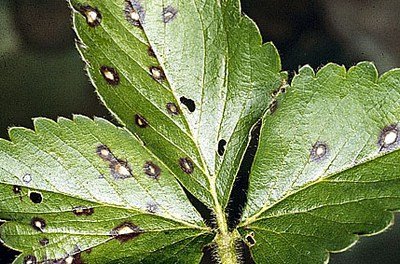

White spot usually appears on strawberry leaves
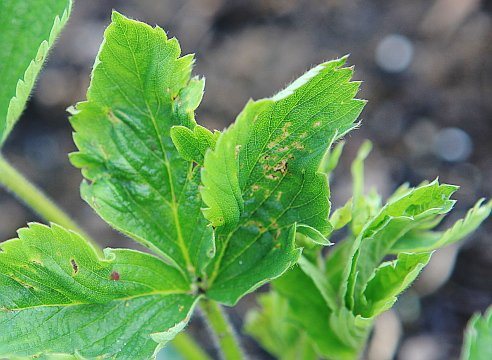

Strawberry mite is common in garden plots

